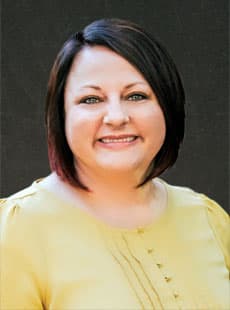Flowing Electrons
Group Size
Individual
Summary
After "acting out" different types of circuits, students will create their own circuits using wire, a bulb, a battery and a switch.
Materials
Attachments
One per student:
- Two-inch Styrofoam balls
- Battery Book Cover handout (pdf)
- Four sheets of bond paper
Additional Resources
- Electricity, by Ron Marson (Tops Learning Systems, http://www.topscience.org/info/ordering_information.html); ISBN 0-941008-32-0
Background for Teachers
In order to create a current, electrons jump continuously from one atom to another. Show a model of an atom and locate the position of the electrons.
Intended Learning Outcomes
1. Use Science Process and Thinking Skills
3. Understand Science Concepts and Principles
4. Communicate Effectively Using Science Language and Reasoning
Instructional Procedures
Invitation to Learn
Hold a D-cell battery up for the students to see. We are going to
discover how electricity flows by playing a game called Flowing
Electrons. Students become an electron moving in a circuit.
Instructional Procedures
- Students sit in a large circle. Each person is given a Styrofoam ball representing an electron. Their hands are atoms, and the circle represents a pathway, or wire, that the electron must travel on.
- The teacher positions herself between two students, with the box holding the extra electrons to the teacher's left. On the box (battery) is a + sign at one end and a -- sign at the other end, representing the two ends of a real battery.
- With the command of "pass," students pass the electron to their right with their right hand. At the same time, students receive an electron with their left hand. The teacher takes electrons from the box. The student to the teacher's left passes electrons into the box. Interject the word "and" between the word "pass" as students move the ball from the left hand to the right, thus being ready to hand the ball to the person on the right with the next command of "pass." Don't drop the balls. Students can't pass unless they receive at the same time. A person may never have more than one ball in each hand at a time.
- Balls can't be passed unless the receiving student is directly to the right of the passing student.
- To play, students pass an electron with the command "pass." They are acting out current electricity. The teacher's command turns the flow of electricity on and off.
- To add a bulb, one person is chosen to represent a light bulb in the line. When he receives an electron, he runs around the desk before passing to the next person in line. The student must then run back around the desk to receive the next electron. After a few times of the student running, ask him how he feels. He should be getting warm. Tell the students that the light bulb offers a resistance to the flow of electrons, and is called a load. Anything that uses electricity is a load. It slows the flow down, so the bulb heats up and lights up.
- Introduce a switch by having three students sitting by each other. At the command "off," move forward so they can't receive or pass electrons. This is called an open switch because the wire has been interrupted. Switch it on again or close the switch so the electrons can flow in a circuit.
- Repeat the activity; this time students explain. Students return to their seats.
- Give each student a wire, bulb, bulb holder, battery and a switch.
They are to make:- a complete circuit.
- an incomplete circuit.
- a closed circuit with a bulb.
- an open circuit with a bulb.
- After creating the different types of circuits, students design a Battery Book Cover and label it Energy Sources. Cut it out and trace around it on four sheets of paper so students may have a battery-shaped book. Staple the pages together at the top. On page one, draw a complete circuit. Label the parts. Include the vocabulary words pathway, load, and power source. On page two, draw an incomplete circuit. Explain why it doesn't work. Label the drawing. Draw a closed circuit with a bulb on page three, and an open circuit with a bulb on page four. Label the parts on both pages using the vocabulary words. Include the word switch on the last two drawings. Explain the difference between an open circuit and an incomplete circuit. Add any reflections on the last page about any new discoveries about circuits.
Extensions
- Give each student a Kit Kat that has a foil component to the wrapper, a light bulb, and a battery. Have him/her make the bulb light four different ways.
- Students write testable questions about other areas they want to experiment with and present their list to their teacher for approval and a supply of materials. Proceed with further experimentation.
Family Connections
- Students teach their families the Flowing Electrons activity.
- Make a list of the items that use electricity in their home during a 24-hour period.
Assessment Plan
Attachments
- Students learn How to Make An Electric Puzzle and are quizzed on what they learned in the electricity unit. Have students write ten questions with answers and cut them into two strips or use the Electricity Puzzle Pieces. Place the questions in one pile and the answers in another. Using a piece of cardstock, center the circuit board worksheet and glue down. Punch ten holes on each side by each question and each answer. Place a paper clip over each hole (to hold their questions and answers) and insert a brad. Flip the cardstock over and attach wires to the brads from the back of the matching questions and answers. Wire ends should be stripped of insulation covering about 1 inch on each end before wire is wrapped around brads.
- To test the puzzle, unbend a paper clip. Secure it to the positive end of the battery using a wide rubber band. Place a wire with the copper ends exposed to the negative end of the battery and tape it down with masking tape. Wrap the other end of the wire around the metal connection on the bulb. Touch the end of the bulb to the question side and the paper clip to the answer side. When the bulb lights, you have a match.
Updated: 10/10/2022


 UTAH EDUCATION NETWORK
UTAH EDUCATION NETWORK

 Justin
Justin Braxton
Braxton Dani
Dani Kayla
Kayla Katie
Katie Matthew
Matthew Rob
Rob Val
Val
